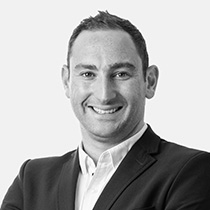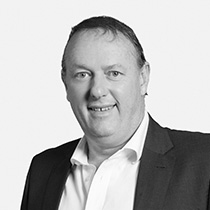PERFORMANCE
The Fund increased by 8.7% in USD in the fourth quarter of 2023 (Q4-23). The three-month period was characterised by strong market returns as inflationary risks appear to be receding, with some market participants anticipating interest rate cuts. After a poor 2022, the Fund delivered solid returns in 2023, with a calendar year return of 12.0% in USD. Notwithstanding this, we remain incredibly excited about the prospective returns for the Fund thanks to a diversified collection of attractive assets. Aggregate indices' levels appear fully valued, and thus, while we are not very optimistic about future aggregate market returns, especially in the US, we continue to find compelling individual assets that should deliver robust absolute returns.
During the quarter, we saw a high level of market exuberance, triggered by what can be termed a Goldilocks scenario of receding inflation and expectations of either no recession or a minor one, which should be good for both the economy and the stock market. However, this market sentiment makes us somewhat nervous as Goldilocks scenarios rarely play out as expected, and material geopolitical risks remain on the horizon due to the upcoming US election, ongoing conflict in both the Middle East and Ukraine and a continued strained relationship between the US and China. While we don’t have a strong view of how these risks might manifest and are always cautious about making definitive macroeconomic calls, it does not seem like the market is expecting many negative outcomes from these risks. The Fund, however, owns a collection of assets that are well diversified, with distinct drivers that should allow the Fund to generate good returns, notwithstanding any of these risks coming to fruition. This comes back to a key principle in how we manage risk, which is that the price you pay for an asset and the margin of safety embedded is our most effective risk mitigation tool. Considering this, the weighted average equity upside of the Fund is currently 63%, which remains extremely compelling. Beyond this, the weighted equity five-year expected IRR is 20%, and the weighted equity free cash flow (FCF) yield for stocks owned is just over 7%. Using the rand-denominated Fund’s long-term track record (expressed in USD) as proxy*, over the past five years, the Fund has generated a positive return of 4.7% per annum (p.a.), over 10 years, a return of 2.5% p.a. and, since inception 24 years ago, 8.0% p.a.
During the quarter, the largest positive contributors were Adyen (+72%, 0.8% positive impact), Pinduoduo (+58%, 0.71% positive impact), and ASML (+27%, 0.58% positive impact). The largest negative contributors were Li Ning (-36%, 0.41% negative impact), 3R Petroleum (-14%, 0.23% negative impact), and St James's Place (-14%, 0.21% negative impact).
FUND POSITIONING
Adyen’s rebound is a good example of the mispricing of assets, which can happen in public markets. The Dutch payments company's share price lost 65% in value from its peak in a mere two months and then doubled over the next three months. The intrinsic value of the business did not materially change over this five-month period, yet the publicly quoted price oscillated dramatically. We did not own Adyen at its peak due to our view that it was overvalued, but it remained under coverage due to the inherent business quality and our wanting to own it at the right price. When the market provided us with an opportunity, we took advantage of it. We remain on the lookout for these opportunities and believe there are numerous companies currently held by the Fund that are mispriced – we have no insight into when these publicly-traded prices will converge with our assessment of intrinsic value, and this might not happen as rapidly as it did with Adyen, but we are happy to be patient while maintaining our valuation discipline.
The Fund ended the quarter with 80% net equity exposure, slightly higher than the prior quarter. The Fund does, however, have put option protection, equating to 5% of effective exposure (approximately 20% nominal exposure) spread across a range of indexes (US, Europe, and Emerging Markets).
As equity markets rallied in the quarter, so did bond markets, which benefited the Fund thanks to our recently increased bond positioning. The Fund still has ~10% exposure to sovereign and corporate bonds, a much higher level than in the past, thanks to the attractive yields on offer. The current weighted yield for the collection of bonds held is ~7%, or 9%, when excluding the short-term (two-year) US Treasuries, which are seen as an alternative to cash. This level of yield in hard currency is far more attractive than what we have observed in the past decade.
We have limited exposure to real estate, with the balance of the Fund invested in cash, largely offshore.
Notable increases in position sizes (or new buys) during the quarter were Expedia (online travel agency), Elevance Health (US healthcare insurance) and Interactive Brokers (brokerage firm).
Expedia is the second largest online travel agency, with a large presence in the US but operating globally. Historically, it was managed worse than its closest peer, Booking.com, after the culmination of extensive M&A, which was not properly integrated. This began to change under new leadership, namely Peter Kern, who became the CEO in the midst of the Covid pandemic. A key aspect he addressed was Expedia’s marketing spend and ensuring this was being centrally managed compared to at a brand level historically, leading to inter-company marketing competition and inefficient allocation of marketing dollars. The fruits of these efforts have begun to show via margin expansion and faster growth, driving significant FCF generation. This has allowed the business to authorise an aggressive share buyback programme amounting to $5 billion, which was a third of the market cap when announced. Travel remains a structurally growing industry which should support mid-single-digit revenue growth at Expedia. When combined with margin expansion and a reducing share count (due to the share buyback), this should drive mid-teen EPS growth over the next few years, with the business trading on a 9% FCF yield.
Elevance is a US healthcare insurance business with significant scale. It is also pursuing a strategy of building a healthcare service business that has synergies with its insurance segment and should drive better patient outcomes and generate cost efficiencies. The healthcare service business has been built both organically and via M&A and already accounts for a quarter of group revenue. Elevance’s business is fairly economically resilient, barring a major change in employment levels and generally exhibits high revenue visibility due to the contractual nature of the business. We expect EPS to compound at a mid-teens level, with the business currently trading on 13 times 2024 earnings, which we feel is compelling.
Interactive Brokers is a highly focused global financial services business that provides the cheapest, most comprehensive, and best broking platform, which has led to rapid client growth. Thanks to their technology investments, a large portion of client servicing is automated, which allows for scale benefits and leads to operating margins of 50-60%. The business derives income both via commissions from trading and net interest earned on various forms of lending secured by portfolios. Growth will continue to be driven by expansion in client accounts thanks to their low-cost offering. This should drive market share gains as peers cannot replicate the efficient cost structure of Interactive Brokers, which is also highly scalable and gives them a powerful moat. Earnings per share should compound at a low double-digit rate, with the business currently trading on 14 times 2024 earnings, which is attractive in our view.
OUTLOOK
The calendar year 2023 was a period that started with most market participants expecting a recession in the US, which has not manifested. Current high-frequency data suggests the economic environment remains buoyant, with things heading for a soft landing. However, if the last few years have taught us anything, it is that forecasting economic outcomes remains tricky. There continues to be a large amount of uncertainty in the world. We remain of the view that the best way to mitigate against risk is via bottom-up investing in assets that are attractively priced. The Fund contains a collection of attractively priced assets that provide diversification to achieve the best risk-adjusted returns going forward in a variety of future macroeconomic scenarios.
*Note that this is a new fund and, as such, does not yet have a track record for the relevant periods. As it is the dollar-denominated version of the same investment strategy deployed historically in the management of the rand-denominated Coronation Global Optimum Growth [ZAR] Feeder Fund, we show the track record of the latter portfolio, converted to US dollars, to indicate historical results achieved by the Strategy.
 South Africa - Personal
South Africa - Personal



